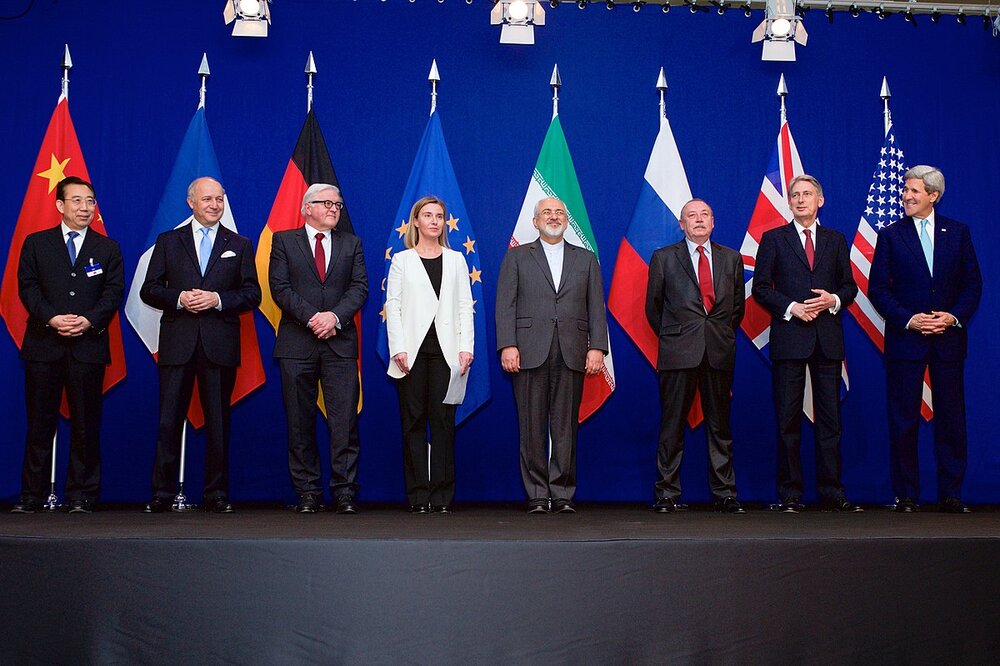An accessible passkey to the West Asia crisis
How the nuclear deal can create a new solution?

The circle of tensions in West Asia runs slow, and after a slow or modest pace, it can potentially plunge. Like a multi-pointer watch, West Asia has several cogwheels. As one of the cogwheels of conflict bounces, the rest will pursue. Alleviation of a single tension in the region doesn't help immune others, but the escalation of tension in West Asia needs to be defused, at least by quitting one of the cogwheels of pointers.
Appeasement of tension is something that the region is in dire need of, and it can't afford another war. Furthermore, in case of breakout of war, warfare expenditures won't be limited to particular sources due to transregional states' tendency to show of power. New players are added to West Asia's playground. Russia and China are intended to be marked as the focal point of that arena. Moreover, regional or local states are eager to spend much more in the area to upgrade their image and cover up their previous weakness.
The conflicts and feuds in West Asia have a prolonged list that the primary ones are enumerated as follows:
1) Security factors: The ceiling of security buildings is the sky, and governments try to expand security scope. In this way, West Asian countries in comparison to other regions are greedier to guarantee hard security.
****Nuclear capability is one of the security problem's subtitles, as some regional players after Iran’s nuclear program were incited to be captioned as "nuclear state".
2) Ideologies: Full spectrum of ideologies that are going onward against each other are alive and reinvigorated in the region. Sunni-Shia, Arab and non-Arab, and self-other factions are only some ostensible instances that when foreign interventions are augmented, the result is a full-spectrum of radicalism, extremism, and fundamentalism.
3) The Israel-Palestine tension: This conflict is disguised as a low-level issue during Trump's presidency due to the normalization of relationships by some Arab countries with Israel, but still, it is a major concern for the region.
4) Good governance: Although the ballot box is a weird thing in some countries in West Asia, an overwhelming majority of states have nothing in common with democracy; in other words, democracy is not institutionalized, and decisions are made mostly based on human love and hate, not logic. Therefore, cherry-pick decisions are more likely to make than logical or institutional-based ones.
The cherry-picking decision stems from elements rooted in the region, including in the Sykes-Picot agreement that humiliated Arab states, long-term foreign intervention, dismay from coalitions, switching West Asia into a playground, self-help norms, concerns of transregional players, economic backwardness, etc. All these can turn West Asia into tender box put the region to blaze.
To solve West Asia’s troubles and given the complexity therein, an idealistic, comprehensive, and full-scale solution is farfetched. The flipside is a doable, practical, and accessible solution that covers all the players' common concerns begin from tough ones but simultaneously easy aspects of accessible sub-titles of problems.
Among all aforementioned factors that can be potentially assessed as sparks of conflict, as of today, on the one hand, security has been the most powerful component, and on the other, all factors have a hidden layer of security concerns.
Vali Nasr, who is always sensible in his views, in a recent article titled "The Middle East’s Next Conflicts Won’t Be Between Arab States and Iran”, describes power equation in the region, therefore to forge resolutions two factors including security-based and a non-Arab solution are necessaries and available.
Iran's nuclear program is one of the most available options that both is exercised and is a multilateral solution-based resolution which is a subtitle of security and non-Arab one.
The deal at least can quench the appetite of the region for nuclear balance and enable the non-proliferation principles, and at most, it can push the region both toward the idea of a West Asia nuclear-free zone and subsequently prioritize economy as the new path of rivalries.
If the ambiguity in the nuclear deal status continues, two levels of measures would be predicted. At the first level, the main negotiating countries will do activities aimed at having the upper hand on the negotiation table in the future.
The second level belongs to regional states or players who are indirectly affected by the deal that their activities could jeopardize the deal, non-proliferation principles, and stability of the region. In this vein, the more ambiguity to the deal, the more X will be enlarged to the region's power equation, which amplifies self-help rules. Full operation of the 2015 nuclear deal can stop or return the tick of watch against the interests of states that follow nuclear ambitions or military programs in the region.
When the nuclear piece of the crisis domino stops falling, automatically other pieces will follow and the motivation of other pieces would face failure. Since consensus-oriented measure in the region has been rarely materialized, the deal can be tested in this way, and artificial taboos could be broken by addressing new phenomena.
Therefore, a multidimensional outcome for the region is a fantasy, and excessive idealism is doomed to fail. Small steps towards a solution and choosing a parcel of the crisis to be removed, are pragmatic. As security is a common concern of the region, deciding on the nuclear deal as a tested route is a doable assignment. If there is a molecule of will, there is a clear way.
Leave a Comment